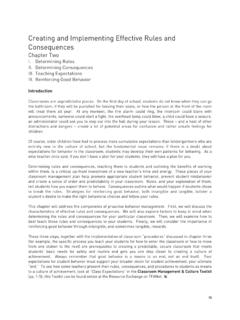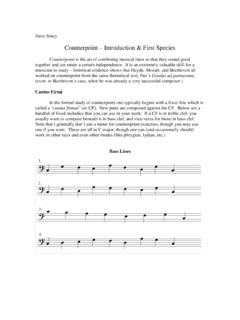Transcription of The World Eightball Pool Federation - EPA
1 The World Eightball Pool FederationTHE GOVERNING BODY FOR Eightball POOLE stablished 1992 World Eightball Pool Playing RulesWorld Eightball Pool Playing RulesCopyright 2014 Including amendments approved by the Annual General Meetings up to 2014 AThe Spirit of the GameThe Game is known as Eight-Ball Pool. It is expected that players will always play the game in the truespirit and in a sporting manner. The Referee will take whatever action is necessary to ensure that the spiritand rules of the game are Game of Eight-Ball Pool is played with:-(1) A "Cue Ball" - being a white ball.(2) Fifteen "Object Balls" - consisting of:-(a) "Colours" - being a group of seven red balls, (or balls numbered 1 to 7) and a group ofseven yellow balls (or balls numbered 9 to 15).(b) The "Eight-Ball" - being a black ball marked with a number "8".
2 (3) A six pocket rectangular Pool Table with general characteristics as follows:-(a) The cloth will be marked with a "Spot" at the position where a straight line drawndiagonally from the centre of a side pocket to the centre of a corner pocket would intersectwith a straight line drawn diagonally from the centre of the opposite side pocket to thecentre of the other corner pocket.(b) The cloth will be marked with a "Baulk Line", being a straight line, drawn fromcushion to cushion, parallel to, and one fifth of the length of the table from, the face of thecushion that lies the greatest distance from the (1) Shot:A "Shot" begins when all balls stop moving from the previous player "Plays a Shot" by striking the Cue Ball with the tip of the cue. A "Shot" ends when all balls stop moving from the current Shot.
3 (2) Play:To "Play" an Object Ball is to play a shot that results in the Cue Ball's first contactwith another ball to be with that Object "Play" the Cue Ball is to strike it with the tip of the cue.(3) Ball On:At any time during a frame, a ball "On" is any Object Ball that the player may playwithout incurring a penalty.(4) Pot:A ball is "Potted" when it leaves the bed of the table,enters a pocket and remainsin that pocket.(5) Visit:A "Visit" comprises one shot or a series of shots. Each visit lasts until the playerfails to pot a ball On". (Or until a foul is committed or the frame ends)(6) Turn:A players "Turn" at the table comprises one visit or, after most fouls committed bythe opponent, two visits.(7) Frame:(a) A Frame is one game of Eight-Ball Pool between two players or two pairs ofplayers.
4 A Frame is played from the opening break and usuallythrough until theEight-Ball is potted.(b) A player may concede a frame at any time.(Note: there are other ways that a frame may end - see "Loss of Frame")(8) Match:A Match is a predetermined number of frames of Eight-Ball Pool between twoplayers, two pairs of players or two teams of players.(9) Player in Control: A player (and the player's partner in doubles) is deemed to be "In Control"of the frame from the time that the balls stop moving from the final shot of anopponent's turn until the balls stop moving from the final shot of the player's can be no instance, once a frame has commenced, that someone is not incontrol. DObject of the Game(1) The object of the game is to win by being the first player toPot a group of Colours in any orderand in any pockets and then Pot the Eight-Ball in any 1 of 9 WEPF Playing Rules(2) When "On" a group of Colours, potting more than one ball ofthat Colour in the same shot isallowed.
5 But a separate shot must be played to pot the Eight-Ball and win the from Baulk(1) Baulk is the rectangular area of the table that is bordered by the Baulk Line and the threecushions at that end of the table.(2) When playing from Baulk:-(a) The centre point of the Cue Ball must be in Baulk when a shotis played. (If the centrepoint of the Cue Ball is directly on the Baulk Line it is not deemed to be in Baulk.)(b) The Cue Ball can be moved into position by hand or with the shaft of the cue, but whentouched by the tip of the cue, a shot is deemed to have been played.(c) The Cue Ball may be played in any direction.(d) If a player wishes to play from Baulk after a Foul Snooker , Foul Jaw Snooker or "TimeFoul":- The player must verbally advise the referee of this choice and the referee will then recoverthe Cue Ball and hand it to the player or place it on top of, and in the centre of, thecushion at the Baulk end of the table for the player to retrieve by hand.
6 (e) After an "In Off", Foul Snooker , Foul Jaw Snooker or "Time Foul" the player mustendeavour to position the Cue Ball so as not to create a Foul Snooker. If the player claimsa Foul Snooker from Baulk, the referee may choose to move the Cue Ball around todetermine if there is any position in Baulk where the player would not be Foul such a position is found or not, the referee will announce the result and hand theCue Ball back to the player or place it on top of, and in the centre of, the cushion at theBaulk end of the table for the player to retrieve by Break(1) The Object Balls are racked with the Eight-Ball on the Spot.(2) In the absence of any competition / tournament rules to the contrary, a coin will be tossed or players will lag to determine which player will winner of the toss or lag shall decide who will break a series of frames is to be played (A Match), the break of each subsequent frame will alternate.
7 (3) The first shot of a frame is called the "Break". To "Break", the Cue Ball is played at the triangle of Object Balls from frame is deemed to have commenced the instant that the Cue Ball is played.(4) (a) The Break will be deemed a "Fair Break" if:-(i) At least one Colour is (ii) Four Object Balls (at least) are driven to a cushion.(b) If the Break is not a Fair Break it is a Non-Standard Foul and:-(i) The opponent is awarded two visits.(ii) The balls are re-racked.(iii) The opponent re-starts the game and is under the same obligation to achieve a FairBreak.(c) (i)If the Cue Ball is potted on a Fair Break it is a Non-Standard Foul that is penalisedby the turn passing to the opponent.(ii) If the break is not a Fair Break and the Cue Ball is potted,the penalty for failure toperform a Fair Break applies.
8 (See (b) above).(5) If the Eight-Ball is potted on any break, the balls are re-racked and the same player will breakagain. When the Eight-Ball is potted on the break, all other aspects of the shot are ignored.(Except if a breach of the "Spirit of the Game occurs)(6) Where the wrong player performs the break, if:-(i) the break is fair, the opponent will continue with 2 visits and an open table.(ii) the break is not a Fair Break, see 4(b) Shot(1) On all shots, the player must:-(a) Cause the Cue Ball's initial contact with a ball to be with a ball "On",AND THEN(b) Pot a ball "On"ORPage 2 of 9 WEPF Playing RulesCause the Cue Ball or any Object Ball to contact a cushion.(2) Failure to play a Legal Shot is a Standard Foul.(3) Exceptions:(a) On the Break, the conditions of a Legal Shot do not apply.
9 {See (F) The Break}(b) When playing out of a Total Snooker a player is only obliged to meet the conditions of (1)(a) above. i) Definition: A player is in a Total Snooker when it is impossible to play any part of any ofthe player's own Colour by way of a "straight line" shot. Leaving an opponent in a TotalSnooker is not a foul. ii) If a player believes that a Total Snooker exists, the player may ask the referee for aruling. iii) If the referee rules that a Total Snooker exists, the player's obligations under the "LegalShot" rule are relaxed as follows: - The player need only cause the Cue Ball's initialcontact to be with a ball "On". The requirement to pot a ball and / or cause a ball tostrike a cushion is waived. iv) In a Total Snooker, the straight sections of the cushionsDO come into consideration.
10 Ifa player has to strike a cushion prior to impact with a ball on , then a Total Snooker does exist.(4) Interpretations:(a) If the Cue Ball's initial contact is with an Object Ball that is touching a cushion, simplyforcing that Object Ball into the same cushion does not constitute a Legal Shot.(b) If the Cue Ball and an Object Ball are touching the same cushion, simply forcing the CueBall and / or that Object Ball into the same cushion does not constitute a Legal Colours(1) General(a) When Colours have not been decided the table is deemed to be "Open". When the table isopen a player may play at either group of Colours.(b) Colours can never be decided on a foul shot.(c) Once Colours are decided, the player remains "On" that coloured group for the duration ofthe frame.





